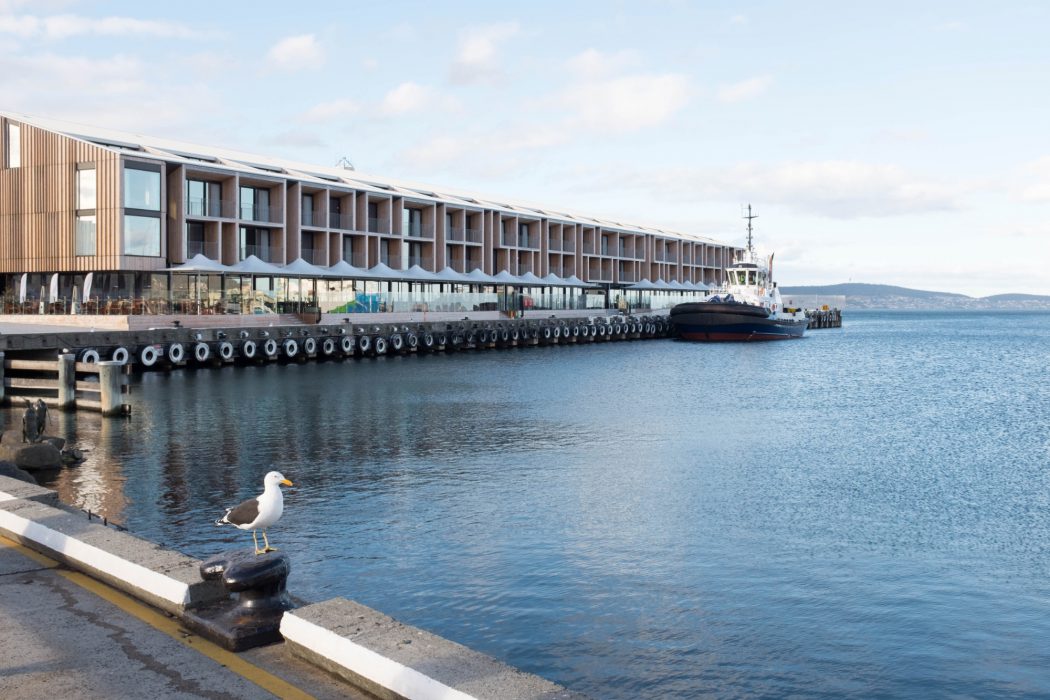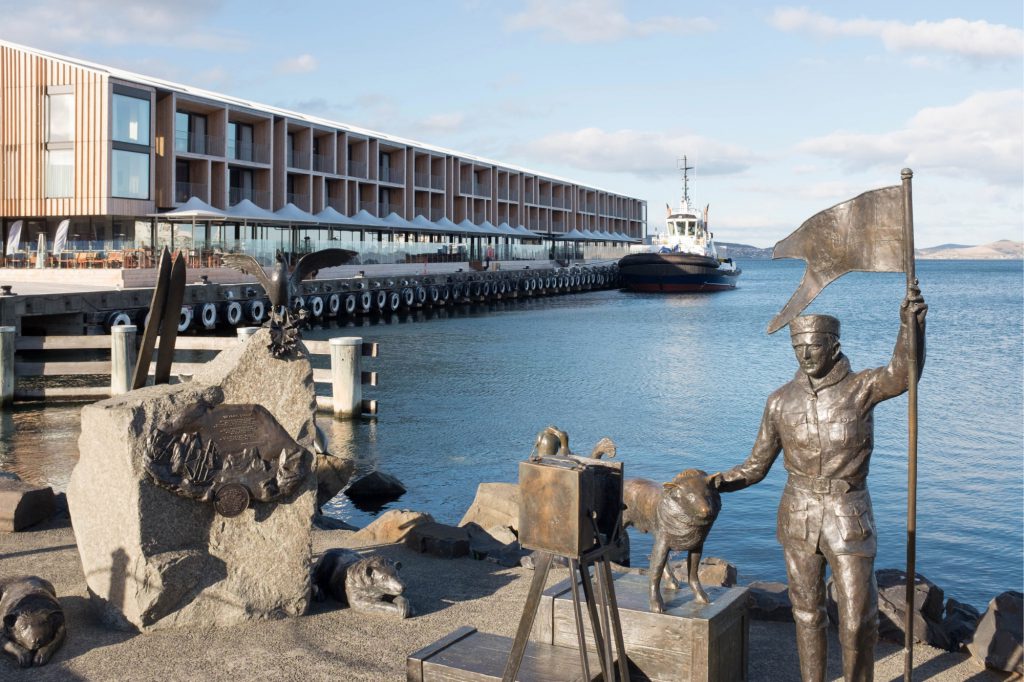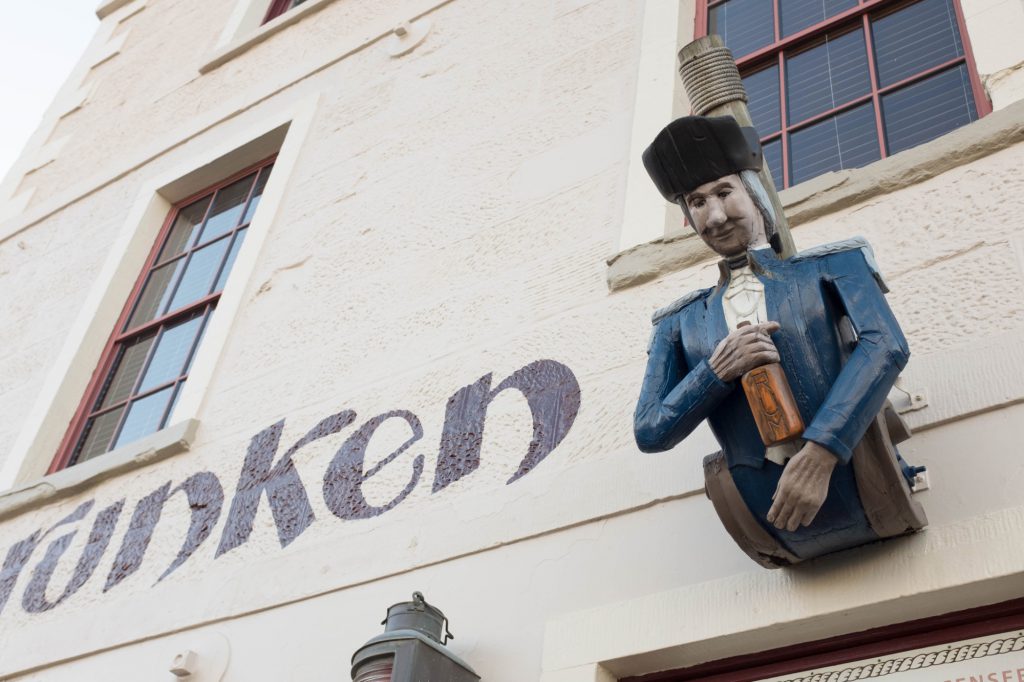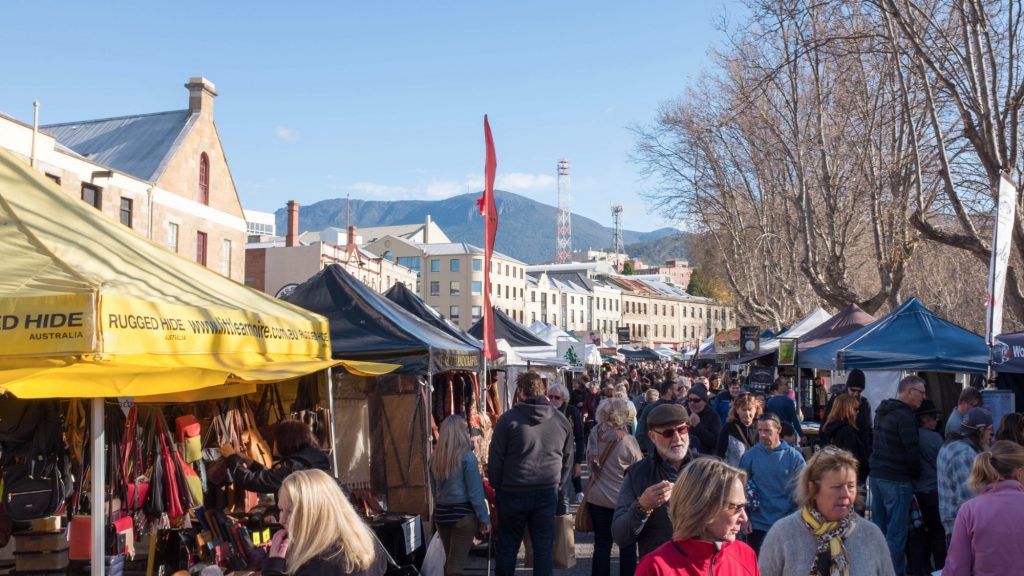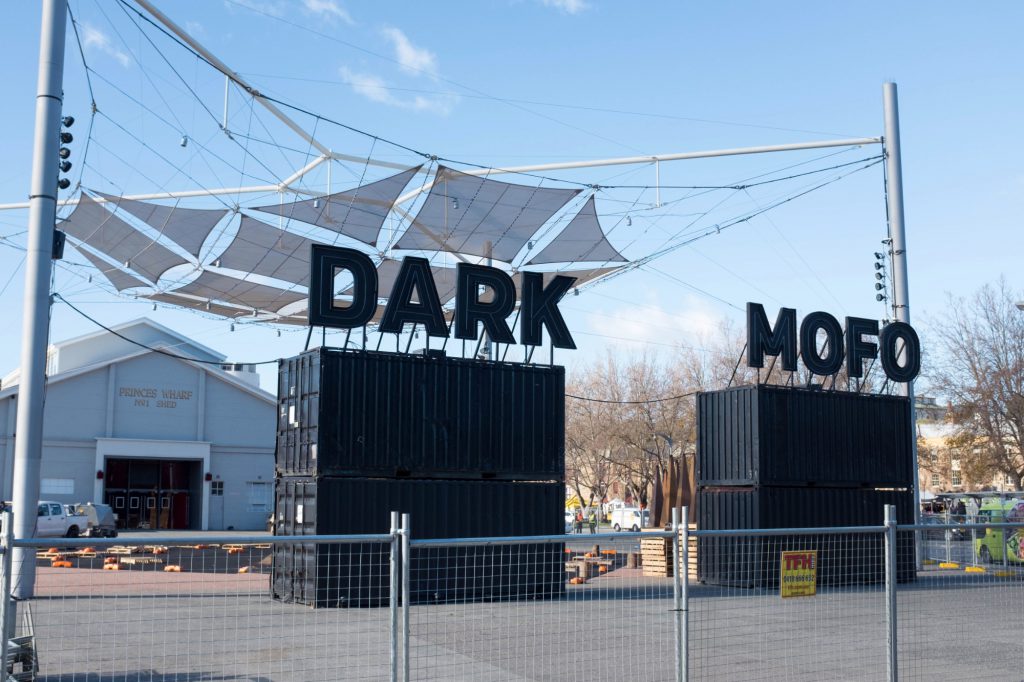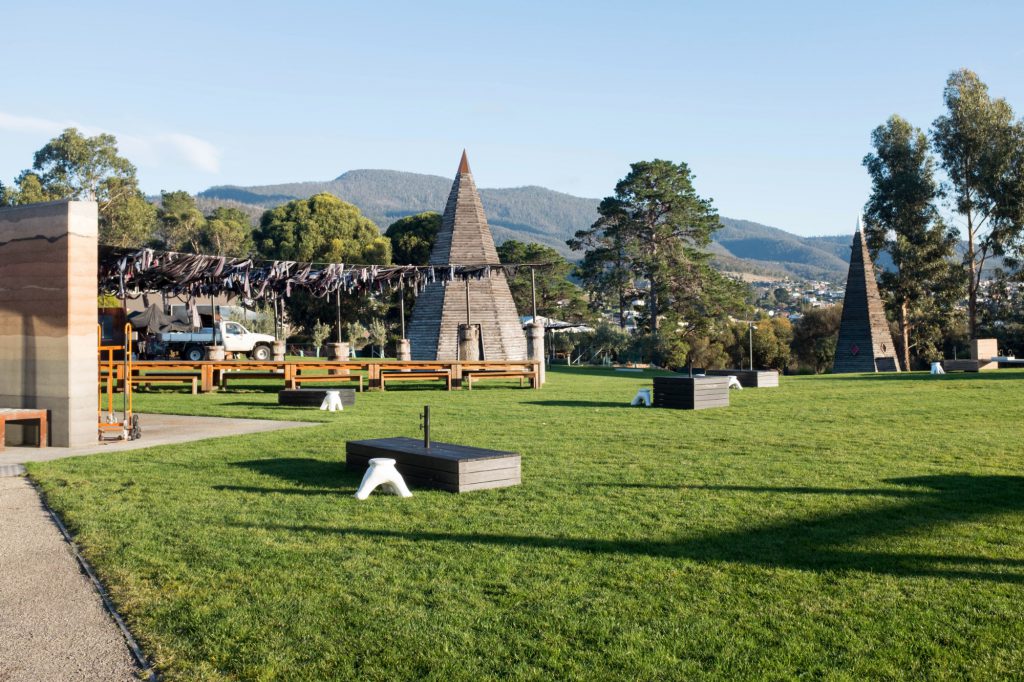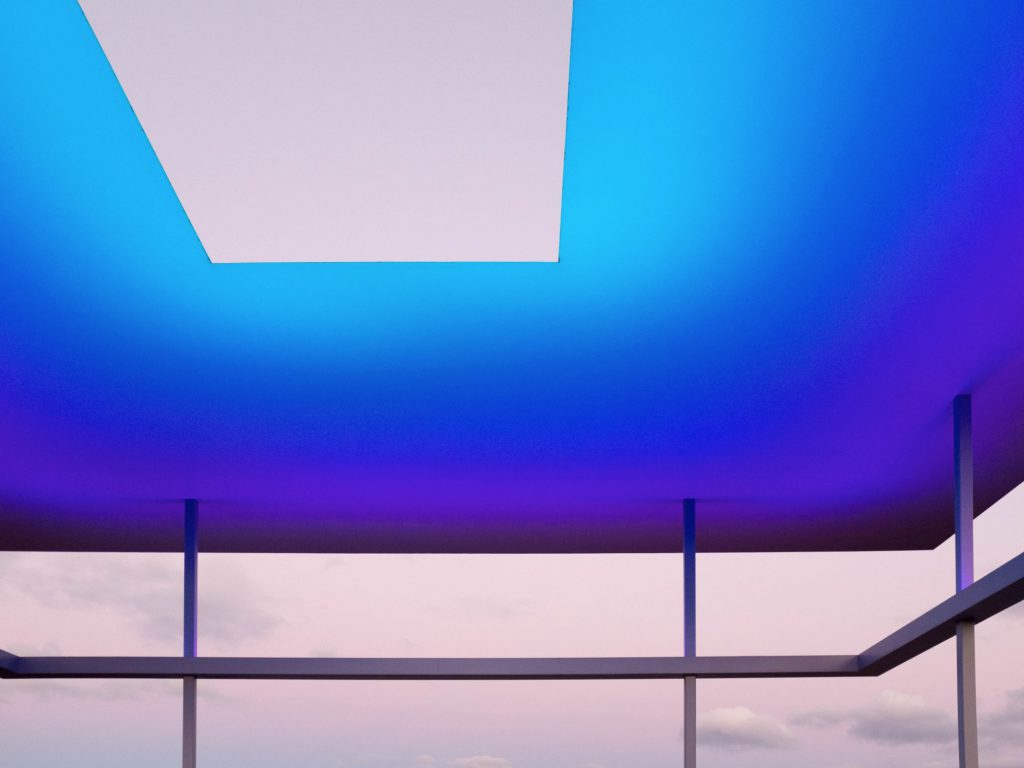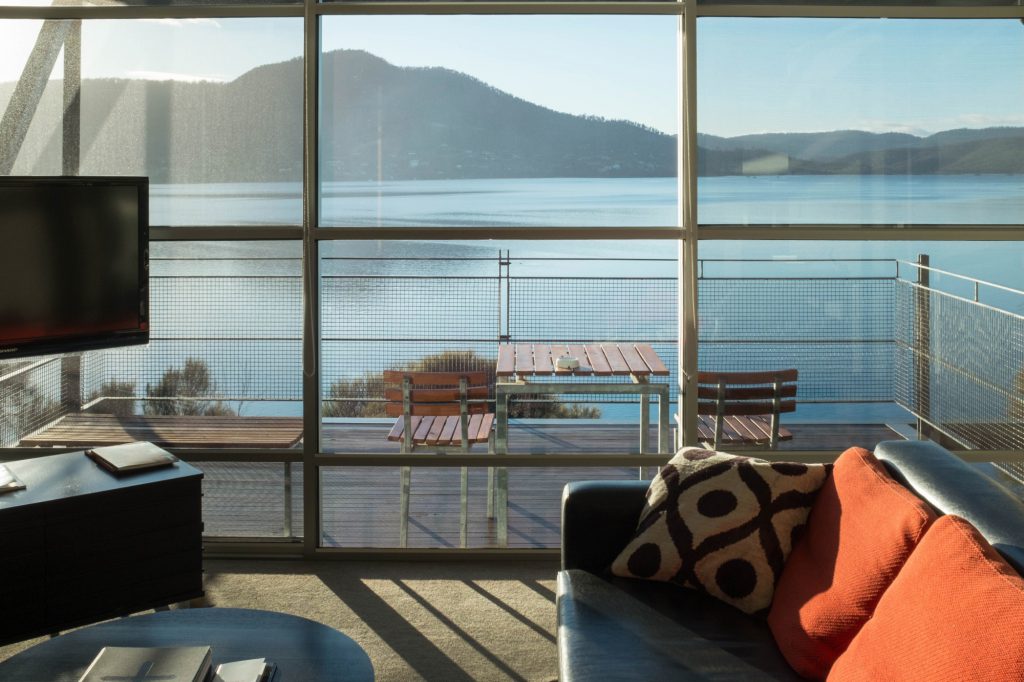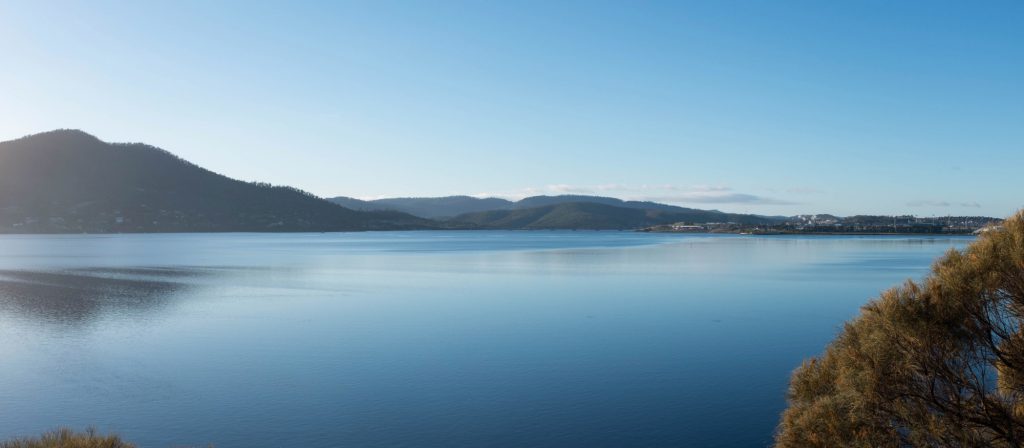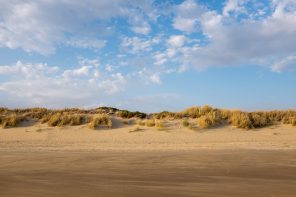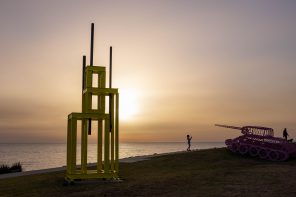Let me start by saying that this five day trip to Tasmania ranks up there amongst my best ever travel experiences. It comprises so many elements that interest me including design, art and architecture, food, nature and hiking; plus, at both destinations, well-considered hospitality from MONA (Hobart) and Pumphouse Point (Lake St Clare). Arriving in Hobart, we headed directly to the waterfront for lunch at Frank’s Restaurant near Elizabeth Street Pier. Combining fresh Tasmanian ingredients with South American flavours, the chef’s serve up light, tasty dishes of ceviche, mussels and pumpkin rounded out with a daily tortilla special.
After lunch, we wandered around Hobart’s waterfront area in Tasmania’s notoriously changeable weather. Wind, rain, sunshine. We experienced it all in the space of 90 minutes. Seeking out handmade Tasmanian goods, we ended up at Henry Jones Design picking out a brass Tasmanian Tiger sculpture by artist Jake Mikoda, a collection of photos and a lovely silk scarf and brooch combination.
The new MACq 01 Hotel (main picture) by Circa Morris-Nunn Architects is a beautiful addition to the waterfront, adding a second smart option to this precinct. Stopping to take in the sculpture of arctic explorer Louis Bernacchi, this combination of waterfront art and architecture was the perfect set up for our next destination; MONA.
This trip to MONA was so much more fulfilling than my previous visits. I put this down to our decision to stay on-site at one of the MONA Pavilions. Each pavilion features a piece of Australian art—in our case Crucifixion (1946) by Arthur Boyd—, and spectacular views over the Derwent River.
The MONA experience began well with the charming lady at reception showing us the way to our cabin; it turns out this is essential due to MONA’s notoriously inadequate signage. Our accommodation was a spacious, one bedroom mid-century style cabin with underfloor heating in the bathrooms, sparkling wine in the fridge and an effective climate control system. The biggest attraction, however, is the view, which is gorgeous and best viewed from the comfort of your bathtub with a glass of bubbles in hand.
Dropping our bags, we hit the gallery, marvelling once again at the vision of David Walsh in creating this ever-expanding venue. MONA stands for the museum of old and new, comprising mostly modern art with a scattering of nicely displayed antiquities. The architecture is substantial and intentionally left rough in places. That night we booked into Faro, MONA’s relatively new restaurant overlooking the water. I must say that this was the standout experience of our visit.
While the food and drinks were excellent, it was the integrated art experience that makes Faro so unique. Waking to the venue, you pass James Turrell’s Amarna installation atop the main tennis court entry to the gallery. As with his other outdoor installations, this is best viewed at dawn and dusk, playing with your perception of colour through the cutout in the roof.
Passing Amarna, you walk down some steps towards the entrance to the new Nonda Katsalidas design Pharos wing. Entering an industrial staircase, you wind your way down in the relative dark before being greeted by one of the restaurant’s friendly staff. As you turn the corner to enter the restaurant, this is where the action takes place. A bright neon tunnel (Beside myself by James Turrell) presents a startling contrast in both colour and materials; best described as sci-fi-esque. Beside myself is one of three light installations by James Terrell within the Faro restaurant itself.
Walking down the light-filled tunnel, the sci-fi element looms large before emerging the main dining room. This space can best be described as cathedral-like in scale with its 13 meters pitched ceilings. Inside, a giant white sphere houses another of James Turrell’s installations Unseen Seen. For me, it was the unique combination of superlative architecture, art and food that makes Faro so impressive. It has been years since a dining experience had this kind of impact on me and all of this before we get to the food.
The food was tasty and well priced (at least by Sydney standards) with smoked greens being the standout dish. This is rare for a vegetarian dish to achieve this status on a menu full of quality meat options; it really was that good. In between courses, you visit the art installations, the third of which is an immersive colour experience called Event Horizon by James Turrell. This was my favourite as the colour appears so dense as to feel solid.
The next morning, we awoke to brilliant sunshine over the Derwent River. Breakfast was a relaxed affair with cooking from the Source Restaurant. Staying overnight at MONA gives you a different perspective on the place, allowing you to wander around without the crowds. One thing we consistently noted about the MONA experience was that everything felt generous. While I know intellectually that these generosities are built into the price we paid, it makes a nice change from hospitality providers that seem to fleece you for every little addition.
Next, we headed to the Salamanca markets. This is one of the most touristy things to do in Hobart and one we were frankly suspicious about. However, this prejudice proved to be unfounded. The markets are a cut above in every way, from the produce to the wood carvings and even the quality of buskers. The whole place resonates with prosperity, which meant we came home with many souvenirs including a beautifully crafted, handmade paring knife made by Organic Blades.
Lastly, it was lunch at the ever-reliable Fish Frenzy before driving three hours to Pumphouse Point on Lake St Clare; our destination for the next three days.
